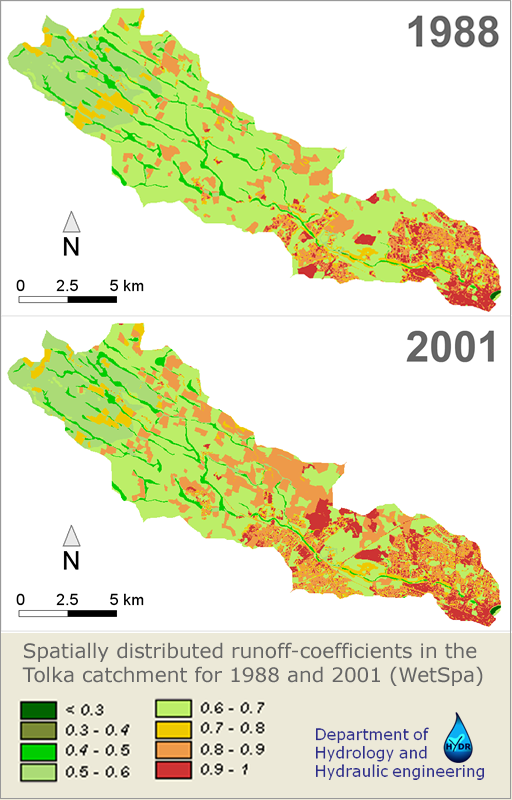| Impervious land-cover or so-called sealed surfaces play a key factor for hydrological changes due to urbanization. However, currently most physically based hydrological models use a land-use class based approach, often disregarding the spatial variability of imperviousness in urban areas. Chormanski et al. (2008) have shown that recently developed remote sensing image processing techniques, similar to those used in WP2, allow a better estimation of the spatially distributed sub-pixel imperviousness. Such measurements could considerably improve assessments of urbanization on the hydrological processes. Integration of vegetation dynamics allows to also account for the impacts on the recharge areas, which are mainly covered with pastures and crops. The use of a timeseries of evapotranspiration, one of the terms in the water balance, in a data assimilation approach is expected to improve model calibration.
|
